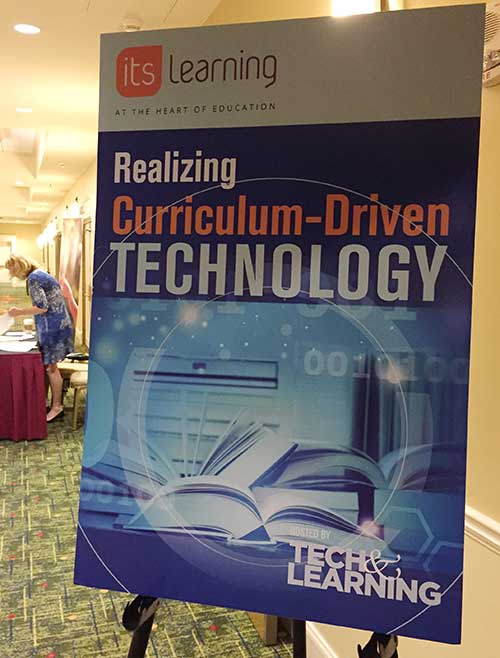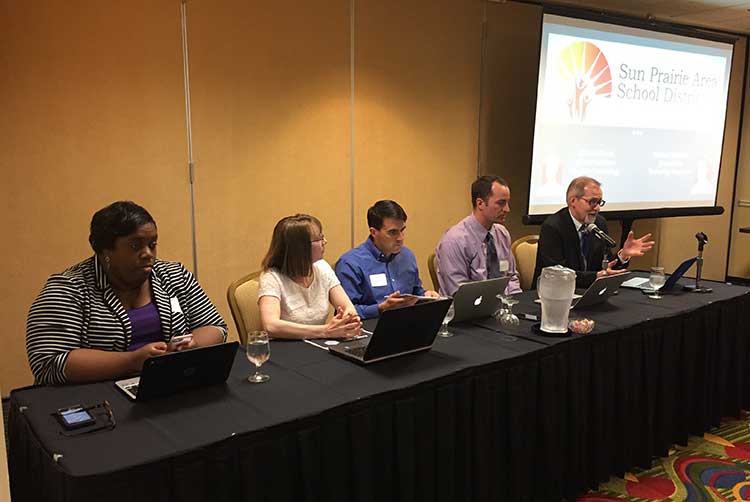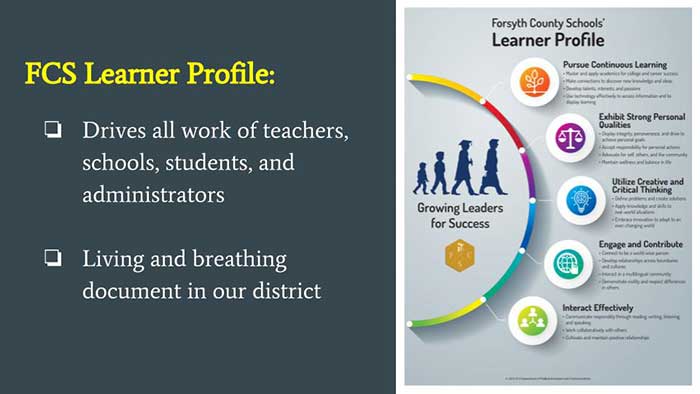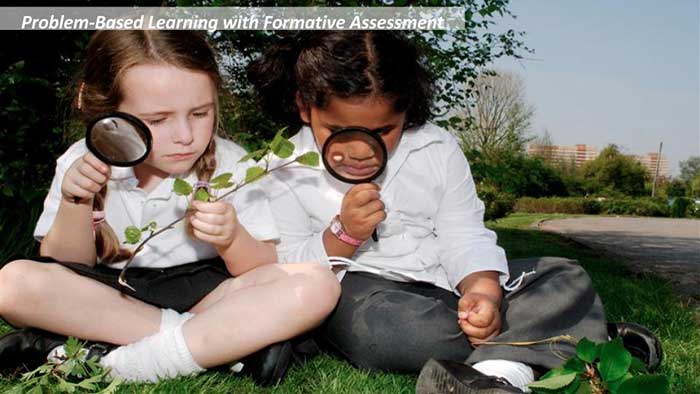Realizing Curriculum-Driven Technology


Tech & Learning hosted a recent event in Atlanta, sponsored by itslearning, that brought together school leaders from curriculum and technology to discuss: How can curriculum and technology better collaborate to improve student achievement and close achievements gaps in reading, math, and more? How can we move toward a curriculum-driven technology approach to realize these goals? The result was a lively and productive conversation, highlighted below.
“We are overwhelming teachers with technology, curriculum, and testing.”
Beatriz Arnillas, former IT director of education technology for Houston (TX) ISD and current senior educational advisor at itslearning, opened the conversation with her keynote, “Learning with Technology: What, Why, and How.”
“Schools spent $7.2 billion on digital curriculum last year,” said Arnillas. “So why do one-third of public high school students fail to graduate each year?” She argued that often this digital curriculum is hard to find, and teachers grow frustrated by the many systems they need to learn. She suggested that by moving to one seamless digital ecosystem, teachers and students will become more engaged and less frustrated. But how can schools get there?
The first step, said Arnillas, is to engage learners with meaningful uses of technology. She cited a Houston math teacher who asked: What will it cost you if you don’t have a college education? How much can you expect to earn? What kind of lifestyle might you be able to afford without a college education? By connecting the learning to real life, students become more engaged.
Arnillas noted another point of hesitation for some teachers is that they worry that their students know more about technology than they do. “Just because students know how to use technology does not mean they know how to use it to improve their lives, to protect themselves, to produce, work, and learn.”
Arnillas cited the fact that many students will graduate into a world where an increasing amount of jobs will be automated, so technology alone will not help prepare students for careers. “If teachers are using technology only to teach the traditional curriculum disciplines, that is not enough to prepare all students for life, colleges, and careers,” she said. “In addition to using technology for the core and non-core curriculum, we have to help them be technology producers so they cannot be replaced by technology.”
Tools and ideas to transform education. Sign up below.
Meaningful professional development and learner-centered instruction are also key, Arnillas said. “Central office departments must combat the silo mentality to build and support a user-friendly digital ecosystem and a cultural environment that fosters collaboration, growth, and innovation.”
Click here to listen to Arnillas’s keynote speech.
*Technology supports curriculum
*Curriculum informs technology
*Teachers and learners drive the learning experiences
Taking the Challenge: Moving to a Curriculum-Driven Tech Environment
Dr. Robert Elwell, director of learning solutions at itslearning, discussed results from the NMC Horizon Project* that noted all challenges in K-12 technology adoption are not of the same scope. The NMC Horizon Project defined these challenges instead by the nature of the challenge.
The NMC Horizon Project defines solvablechallenges as those that we both understand and know how to solve; difficultchallenges are ones that are more or less well understood but for which solutions remain elusive; and wicked challenges, the most difficult, are categorized as complex to even define, and thus require additional data and insights before solutions will be possible.
Using these findings as a guide, Dr. Elwell presented the following challenge to the audience:
1. As a table group, spend about 10 minutes answering the question: What challenges have you experienced toward achieving curriculum-driven technology and digital learning? Write these challenges onto Post-it notes and paste them onto a large piece of chart paper hung on the wall.
2. Next, on a separate piece of large piece of chart paper, move these challenges into the following categories:
SOLVABLE: Those that we understand and know how to solve
DIFFICULT: Those that we understand but for which solutions are elusive
WICKED: Those that are complex to even define, much less address
3. Finally, the group should select a DIFFICULT and/or a WICKED challenge from their chart, and discuss the issues connected with the challenge, the approaches, strategies necessary to consider, and ideas on measuring progress toward accomplishing the challenge. The group selects one member to report out to the larger group.
Some of the challenges and ideas shared by the groups included:
Student buy-in: One group included “student buy in” as one of their wicked challenges. “We talk a lot about teacher buy in,” said Monika Davis of DeKalb County School District, “but we put down student-buy in because students can get the information they need from technology easily – they can Google it, Snapchat, get whatever news they need to get -- but when it comes time to learn with technology—analyzing, using Excel or PowerPoints, and all of those great things--that’s where there’s a pushback.”
Curriculum resources: One group said that districts often have the resources, but their curriculum departments don’t always embrace technology. “Do they understand the role of technology?” the group representative asked. “Technology is a tool; it’s not the end. If they do not understand that piece by pushing it, then the curriculum resources that you’re providing may or may not be what you need as a district to create a digital learning environment.”
Cost: Most groups had “cost” on their list of challenges as funding tied in with many of the other challenges listed. “You have to work smart with what you have and find creative funding sources,” the group representative said. “Sometimes a district has redundant tools and continues to buy new things not realizing that that new thing could replace and save money to something that you’re already paying for,” Dr. Elwell pointed out. Bailey Mitchell, formerly of Forsyth County Schools and now with itslearning, advised, “You have to follow the money and understand the budgets.How many of you have ever been out to lunch with your finance director? That’s a relationship that you have to build as curriculum and tech leaders because without money you can’t fund your vision.”
Too much to do, too little time: Another challenge presented was that of limited time. “There are so many mandatory things that teachers need to do,” said one attendee. “In the Rockdale district, they decided that they would not make things mandatory as far as technology. In Newton County, we use TPAC so our teachers understand that technology infusion is important, but they also understand the pedagogy behind it. Once we can fuse these ideas, the culture of digital learning is solidified. It’s a challenge, but with the right professional development, we think we can work through it.”
Listen to these and other challenges and ideas here.

The final session of the day was a panel discussion led by three school districts: Sun Prairie (WI) Area School District; Forsyth County (GA) Schools, and DeKalb County (GA) School District (GA).
Michael Mades, director of technology, and Nathan Grundahl, technology integrator, of Sun Prairie Area School District were first to present.
Sun Prairie is the fastest-growing district in Wisconsin, with 8,300 students and 12 schools. They started their Curriculum-Driven Technology plan by writing vision and mission statements that were created by a committee that comprised all stakeholders: teachers, administrators, parents, and students. They had been working with several learning management systems, a student information system (SIS), and a curriculum warehouse, which made it hard for teachers and students to find resources.
They moved these resources into the itslearning learning management system (LMS), and began professional development that integrated, rather than isolated, curriculum, instruction, and technology. They also developed standards that provided a common language for integration. Teachers began to co-plan courses to share best materials and practices and personalize learning. They also created “I Can” statements that focused on assessment criteria.
Click here to listen to the Sun Prairie presentation.
Next to present was Jason Naile, director of instructional technology and media, and Ruth Allen, instructional technology specialist, from Foryth County Schools, which has 46,700 students in an area that is growing between five and seven percent each year. The itslearning LMS is integral to the district’s “Learner Profile,” which drives all work of teachers, schools, students, and administrators.

The LMS ensures that students and teachers can easily find digital resources in one customizable system and all resources are connected to standards that are aligned and shared across the district. They use this system for online learning on school-closure days and added a “recommendation engine” that allows teachers to share feedback about different resources. They also integrated an assessment engine.
Some of the challenges they faced included getting initial parent/community buy-in, getting the teachers to use the content library, integrating applications, and keeping the content library up to date. Working with itslearning, the district has focused on solving these challenges. The district continues to move toward a personalized learning implementation, as well as to address digital equity through the use of hotspots, making devices available to students, and parent training.
Click here to listen to the Forsyth presentation.
The final presenter was Monika Davis, director of virtual learning for the DeKalb County School District. With 103,000 students from 156 countries—including 3,000 refugees—DeKalb has a unique challenge to serve the needs of this diverse community.
To address these needs, the district created the following vision for 21st century learning: Being globally competitive in a rapidly changing society requires students to be able to navigate, analyze, and evaluate constant streams of information with the intent of solving real-world problems.
They hope to realize that vision by offering:
- Problem-based learning with formative assessment.
- Multiple opportunities to collaborate during learning.
- Continuous feedback and guidance from teachers.
- Continuous access to digital content and tools.
- Personalized learning with more student control.
- Absences of barriers: time, place, or pace.
These opportunities could occur through face-to-face teaching, online learning through the district’s “Flex Academy,” or a blended combination of the two. Davis said the district was able to ensure continuity for any of these learning experiences by framing their resources into three tool categories:
1- Infinite Campus (the district’s SIS)
2- VERGE – or Venturing into Engagement, Rigor, Growth, and Excellence (all digital content in the itslearning platform)
3- LaunchPad (the student portal)

By simplifying the language of the technology into these three categories, teachers and students can more easily find and use the resources, whether they are learning from home or in a classroom.
To further support teachers in this environment, the district offers the “Ignite U” professional learning community where teachers can use resources, share ideas, and create a culture of collaboration and innovation. Ignite U also uses a combination of face-to-face, virtual, and blended courses using the VERGE (itslearning) platform. The district plans to add a parent portal soon.
Click here to listen to the DeKalb presentation.
In closing, itslearning’s Lance Muller, shared his takeaways from the conversation. “We have to have patient and realistic expectations,” he said. “Can we solve everything at once? Absolutely not. But to remain stagnant is still a problem. A lot of the challenges that you listed, often times your vendor partner can assist with them. It doesn’t always have to start with you. It doesn’t have to stop with, ‘Here’s your solution, implement it, see you at the next event.’ It’s really a continuous dialog.”
Click here to listen to Lance’s closing remarks.
*(2016). New Media Consortium, COSN. The NMC Horizon Report: 2016 K-12 Report: 2016 K-12 Edition. Austin: New Media Consortium. Retrieved September 2016 fromhttp://cdn.nmc.org/media/2016-nmc-cosn-horizon-report-k12-EN.pdf
Christine Weiser is the Content and Brand Director for Tech & Learning, and has been with the company since 2008. She has reported on education for most of her career, working at Scholastic and Gale Publishing before joining Tech & Learning. Christine is also an author and musician, and lives in Philadelphia with her husband and son.
